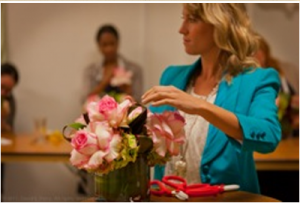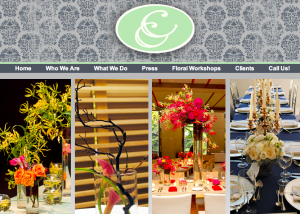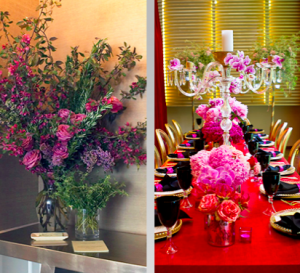Brands
Floral Designer Talks About the Thorns in Online Content [INTERVIEW]
Bess Wyrick has had a love-hate relationship with social media.
 A Manhattan-based florist whose company, Celadon & Celery, caters to individuals and institutions that maintain the most discerning of tastes, Wyrick waded out into the waters of blogging and Facebook and Twitter only to discover that it’s not as simple creating content and deciding to hit submit.
A Manhattan-based florist whose company, Celadon & Celery, caters to individuals and institutions that maintain the most discerning of tastes, Wyrick waded out into the waters of blogging and Facebook and Twitter only to discover that it’s not as simple creating content and deciding to hit submit.
The lesson she’s learned is to practice a personal and brand-protective kind of content curation.
Put up all your great designs, and the do-it-yourself crowd might just run away with your best work (leaving you without their business). On the other hand, don’t put up enough material to whet a clientele’s whistle, and your competitors might then beat you to the punch.
Wyrick talked with The Content Strategist about how her content strategy is designed to keep her business in bloom.
TCS: What kinds of content does Celadon & Celery bring to its online publishing, be that on its website, Facebook, Twitter, or whatever?

Bess Wyrick
Wyrick: It is interesting because we never did any of that stuff until I hired a PR firm to help us. Basically, we’d been producing our own content for our own events, and we started to collaborate with photographers.
We hired a writer to write all the blog entries that we do, the Facebook, the Twitter. And we started producing four hardcopy newsletters each year that talks about what we’re doing . . . about the farms that we are working with. That’s all done in-house.
We recently started branching out to other people in our industry and interviewing them, so that there’s different voices heard in our content.
TCS: When you bring these things together, what sort of opportunities have opened up?
Wyrick: That’s a great question. We started a school. We brought on somebody who did an entire school program and it brought us national recognition and we’ve been able to do events and hold classes everywhere from Oregon to Miami to L.A. It is totally wild that a newsletter or an ad that we did on Living Social can sort of change your entire business. Not necessarily for the good! But that kind of social media has totally and directly affected the business for sure.
TCS: ‘Not necessarily for good’? Talk to me about what you mean by that.
Wyrick: We have essentially changed the way people perceive us by bringing on other writers and by interviewing other people in the industry. And I think the egocentric-ness of social media sort of turned off some of my clients.
 They don’t necessarily want to see their event plastered all over Facebook. And that’s been a huge challenge because every day so many of my competitors, they have Facebook and they have Twitter, and they’re putting so much of what they do online.
They don’t necessarily want to see their event plastered all over Facebook. And that’s been a huge challenge because every day so many of my competitors, they have Facebook and they have Twitter, and they’re putting so much of what they do online.
The whole idea of do-it-yourself has overrun my industry and it’s sort of been a challenge to find a balance — showing work what we can do and then also keeping it private.
TCS: Are you speaking about homeowners or more about hotels and restaurants?
Wyrick: Both, actually. Both. Our personal clients don’t want to see their dining table on Facebook. In terms of some of my hotel clients, they’ve been very specific about what I can and can’t put online. Because that’s become such a pain, we just don’t put the work we do in their venues online at all.
TCS: Have you adjusted your business’s online content strategy toward something like showing less and less of the work you do?
Wyrick: We’re doing a series of videos, that are going to be maybe two to three minutes long, that will show our clientele how you can buy on the market. It’s something I’m interested in doing because I want to give that information away, but it’s also going to take away from my business itself if I give everything away.
TCS: The sweet spot, then, is to get someone to your online presence and then they become aware of your brand and select you based on the experience they’ve have with the content you’ve put up.
Wyrick: Absolutely. That’s really hard to come by, and so many other florists just give everything away. Whether it’s in their books, or in their online videos, or their classes. We’re still trying to figure that out.
Making the arrangement: How to give away just the right amount of content
Keep your brand identity close, Wyrick says, and never assume your customers want to be part of your online content strategy, or will be wiling to pay for what they can get from you for free.

She says your customers are not your spokespeople (unless they agree to be). Online content can’t be a vortex that sucks in everything you have to offer and all the clients you happen to know.
Instead, business owners such as Wyrick — those who work with intellectual property and creative ideas — are searching for the “sweet spot” of providing content, the point that wins new contracts and grows their brand.
Get better at your job right now.
Read our monthly newsletter to master content marketing. It’s made for marketers, creators, and everyone in between.




